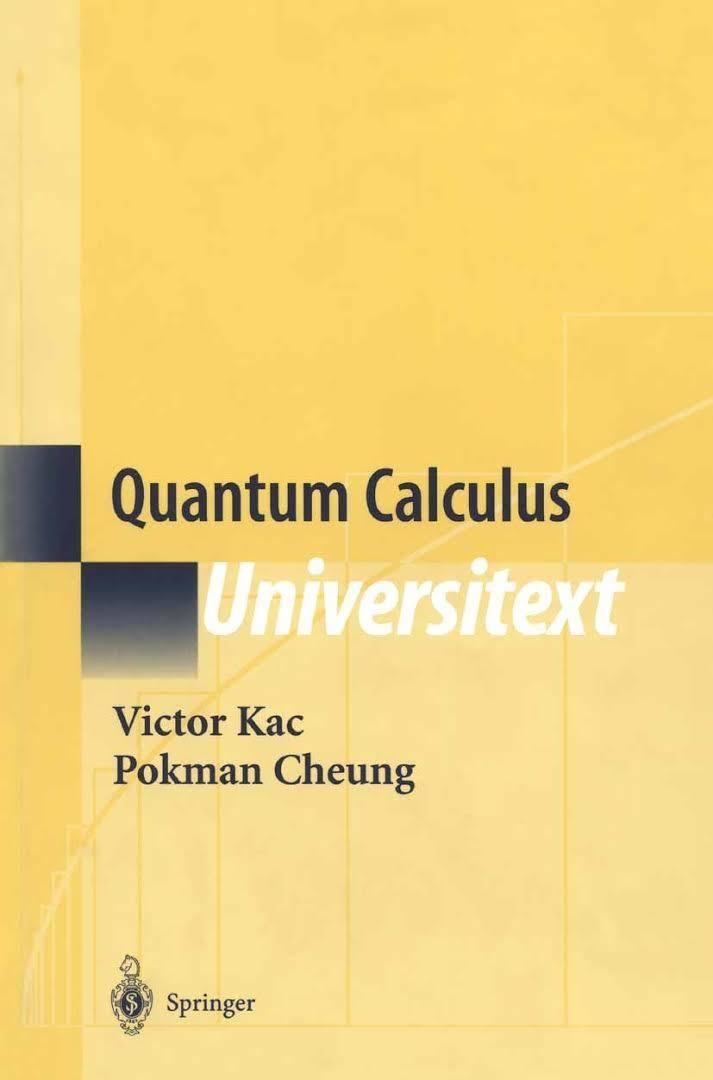Originally published 2002 | ||
 | ||
Similar Victor Kac books, Calculus books | ||
Quantum calculus, sometimes called calculus without limits, is equivalent to traditional infinitesimal calculus without the notion of limits. It defines "q-calculus" and "h-calculus", where h ostensibly stands for Planck's constant while q stands for quantum. The two parameters are related by the formula
Contents
where
Differentiation
In the q-calculus and h-calculus, differentials of functions are defined as
and
respectively. Derivatives of functions are then defined as fractions by the q-derivative
and by
In the limit, as h goes to 0, or equivalently as q goes to 1, these expressions take on the form of the derivative of classical calculus.
q-integral
A function F(x) is a q-antiderivative of f(x) if DqF(x) = f(x). The q-antiderivative (or q-integral) is denoted by
The q-integral is a Riemann–Stieltjes integral with respect to a step function having infinitely many points of increase at the points qj, with the jump at the point qj being qj. If we call this step function gq(t) then dgq(t) = dqt.
h-integral
A function F(x) is an h-antiderivative of f(x) if DhF(x) = f(x). The h-antiderivative (or h-integral) is denoted by
Example
The derivative of the function
with the q-bracket
and
respectively. The expression
History
The h-calculus is just the calculus of finite differences, which had been studied by George Boole and others, and has proven useful in a number of fields, among them combinatorics and fluid mechanics. The q-calculus, while dating in a sense back to Leonhard Euler and Carl Gustav Jacobi, is only recently beginning to see more usefulness in quantum mechanics, having an intimate connection with commutativity relations and Lie algebra.
